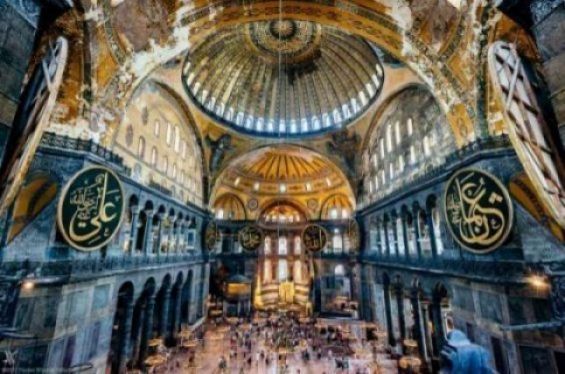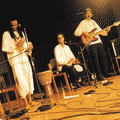The decision of Turkish president Recep Tayyip Erdoğan to transform Hagia Sophia, formerly a museum, into a mosque, created a controversy that quickly crossed the borders of Turkey.
While some welcomed the move, the idea came under heavy criticism. With its huge dome and four minarets, Saint Sophia has a history of 1,500 years, becoming a monument of reference and a UNESCO World Heritage site since 1985.
The conversion of the monument, which has made headlines recently, is not a new thing to this great building. After conquering Constantinople in 1453, the Ottomans decided to transform this sumptuous basilica into a mosque. It was in 1934 that the founder of the modern Turkish state, Mustafa Kemal Ataturk, ordered by decree that Hagia Sophia be converted into a museum.
On July 10, 2020, the Turkish Supreme Court canceled the decree, allowing the conversion of the building into a mosque again.
Ibn Battuta in Istanbul
Despite its ever-changing function, Saint Sophia has been the center of attention. Its symbolism remained central to the inhabitants of Constantinople, known today as Istanbul, capital of the Eastern Roman Empire between 335 and 395 (AD) and of Byzantium between 395 and 1453.
Before the Ottoman conquest, Hagia Sophia was one of the most distinguished churches in the world, with its striking beauty and its unique architecture.
The great traveler Ibn Battuta described it with great precision, when he visited Constantinople towards the end of 1332. Indeed, intrigued by the religious and anthropological aspects of the places he visited during his Rihla, the Moroccan traveler gave a detailed account about his visit to Hagia Sophia.
Ibn Battuta referred to the former basilica in his travelogue. He said that Constantinople has two parts : «They are separated by a large river, resembling that of Salé in Morocco». One of the docks is called «Galata» and the second one «Istanbul», which includes the «Great Church» called Hagia Sophia, built by «the cousin of Solomon».
Ibn Battuta and «the Great Church»
There was clear interest in the church from Ibn Battuta, although it was forbidden for him to enter it and access was limited to Christians at the time. Having been able to cross its outer courtyard, he described the building as being «the largest Roman church», surrounded by a wall, just like a small town «with 13 entrance doors». In front of these gates, guards «do not allow anyone to enter before prostrating themselves before the cross, which they claim to be part of the wood on which Jesus was crucified».
According to the descriptions of the interior of the church which he collected, the staff consisted of thousands of priests, some of whom would have been descendants of the Disciples of Christ, and within it existed an exclusively female section.
Royal custom required that a visit to the church be made every morning, while the Pope was welcomed once a year. Far from looking contemptuously at the rituals of Christians, Ibn Battuta mentioned them with a clear appreciation and praised the reverence and piety that the visitors of the church expressed when they went there.
In addition to the basilica, a monastery outside this enclosure was described by the traveler. This place is also divided into two parts, one for men and another for women.
The description of the Muslim traveler who was valuable for the time when Byzantium was under Christian rule. Ibn Battuta left Constantinople after spending a month and six days there, during which time he recalled being treated generously by the Byzantine king.




 chargement...
chargement...













